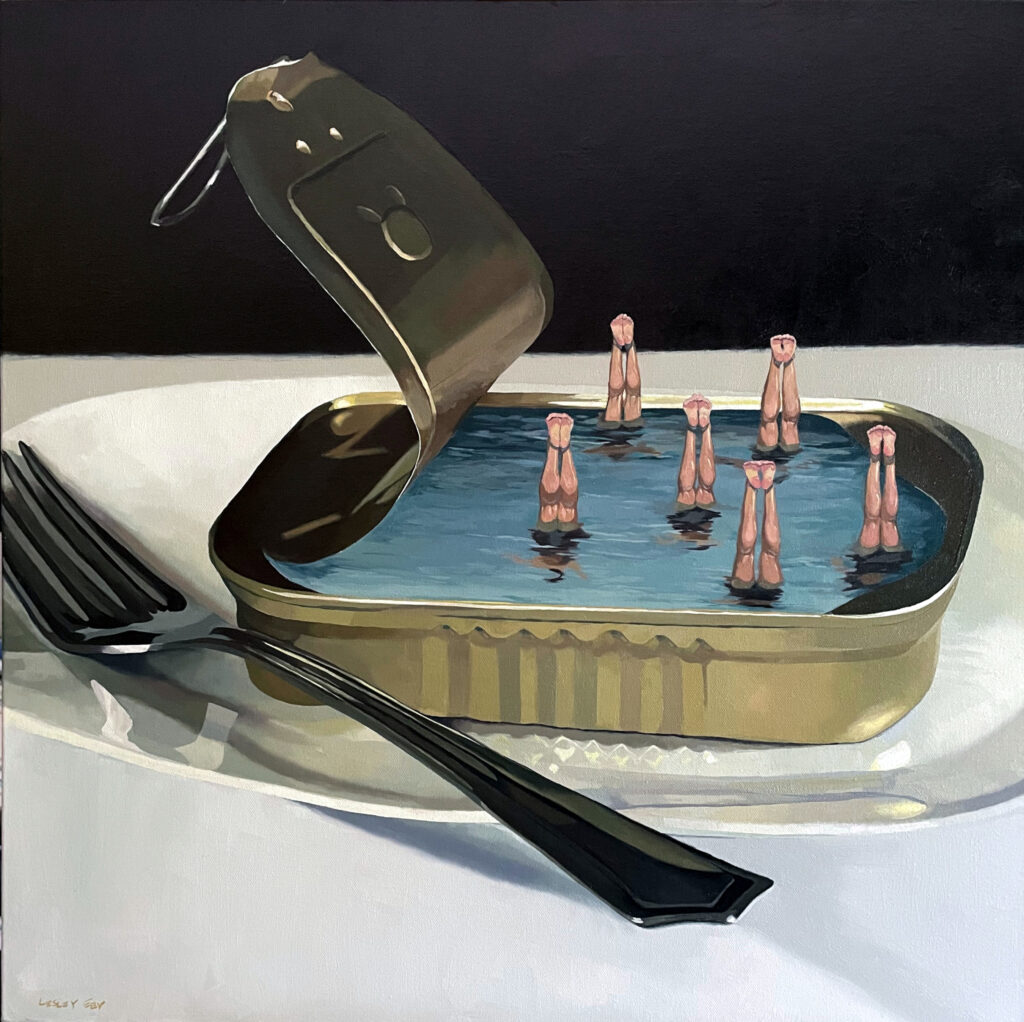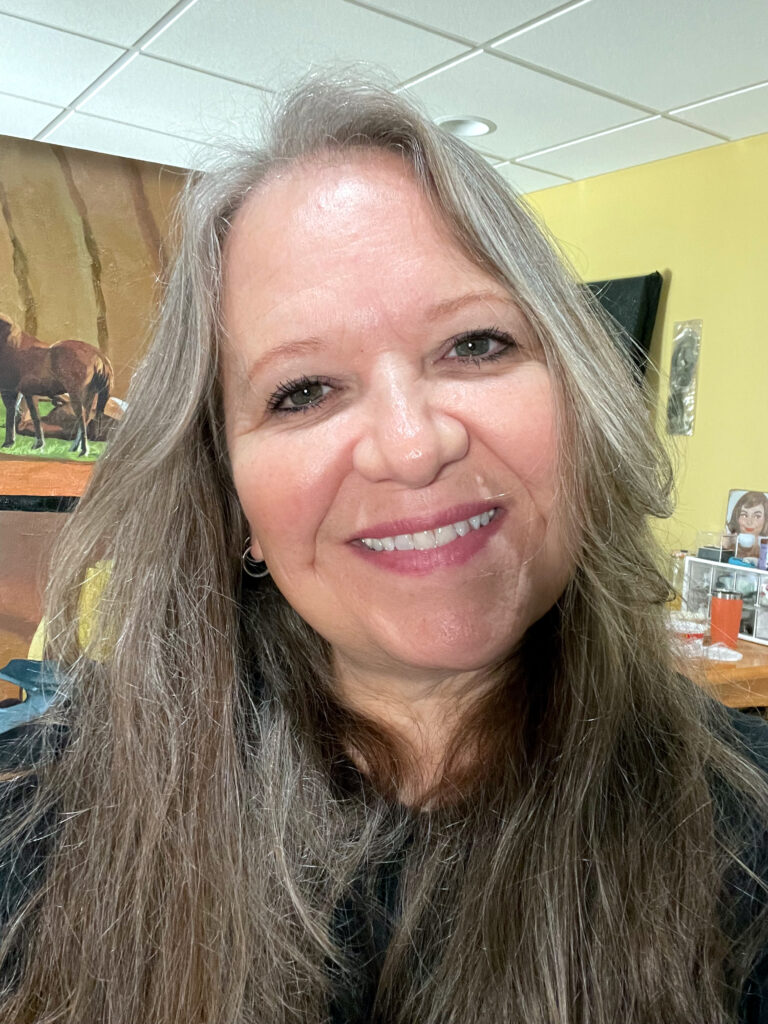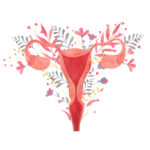Art runs in oil painter Lesley Eby’s family. From the time she was little, her father, who was an artist, practiced drawing with her, teaching her how to see and draw what she saw. Her grandmother taught Eby how to crochet, and her mother quilts. Eby’s adult children, too, all practice varying forms of art, from carpentry to sewing to drawing.
When she was a freshman in high school, Eby’s family moved from St. Louis to Ellsinore, Mo., to be near her grandmother, and in the new rural setting that Eby says “was just like paradise,” she had more time to draw and write poems. Teachers at her school noticed her artistic abilities and asked her to paint their mascot, a redbird, on their gymnasium floor, a mural that remained there for many years.
After high school, Eby attended the Colorado Institute of Art in Denver to study advertising and design. After graduation, she moved back to St. Louis to work in advertising before moving to Poplar Bluff, Mo., to pursue a degree in education at Arkansas State University.
Eby taught high school Spanish, as well as elementary, middle school and high school art, in Kennett, Mo., and Bloomfield, Mo., throughout her 26-year teaching career. During this time, she used her artistic skills to create prom decorations as the prom coordinator and to paint approximately 20 photo backdrop murals for Beta Club dances.
Now retired, Eby focuses on art full-time. Ambidextrous, she paints with both hands and chooses to use a limited palette, mixing every color using only red, yellow, blue, white and burnt umber.
In addition to oil painting, Eby enjoys working in other mediums. In the past, she has made pottery. She wrote a screenplay she had an agent for, which she now plans to turn into a novel. And she currently makes fabric art patterns and fabric art that focus on fish as a subject.
Eby has exhibited her oil paintings and fabric art at the Margaret Hartwell Art Museum in Poplar Bluff, the Arts Council of Southeast Missouri Gallery in Cape Girardeau, and Soulard Art Gallery and Galleries at the Heartland Art Club in St. Louis. She has won awards in regional and national art shows.
Here, she talks about her process for creating an oil painting, painting as a form of rest and why people should continue to draw the subject they always draw. This conversation has been edited for clarity and length.
Mia Pohlman: Tell us about how you started making your surrealist oil paintings.
Lesley Eby: Growing up, I always drew crazy stuff. I had an imagination. And then [with my first surrealist oil painting as an adult], I started with a painting of two sandwiches on a plate with two toothpicks with a line across it with a party dress hanging on it. I was trying to get into surrealism at that time, because I had so many ideas from growing up for surrealism. And then I thought, ‘Mmmm, it doesn’t look very real.’ And so then I started just really focusing on making things look realistic. And so I did that for probably seven years, I worked on realism, and now I’m putting it together.
With the ideas you juxtapose and put together, how do you find those?
I don’t know. I mean, sometimes, they just come to me. Sometimes, I will literally see something and think, ‘Oh wow, wouldn’t it be neat if a bird flew through here?’ And like the painting “Sardinchronized,” I knew I wanted to paint a sardine can. I don’t know why. I just wanted to do that. And then I thought, ‘Well, what can I put in there that’s not sardines?’ I went through a few different ideas and philosophies about it. But I landed on [the synchronized swimmers], and that worked out, and I thought it was a good fit.
What were some of those iterations or thought processes with this painting?
I knew I didn’t want it to be a fish of any kind. And I wanted it to be something that is soothing and relaxing, because that’s kind of what I like about the things that I come up with. It’s like you could be looking at anything, and then something good comes in. I thought about putting pigs in there, but I thought that was too much like food. So I just wanted to put something that would go in a daydream, which is usually what I try to do.
How do you know whenever the painting needs or wants to go in a different direction?
Oh, well, it just doesn’t look right. It feels forced, for one thing. And then I just put it up on the wall for a while and just leave it alone, and then my brain works on it. But I don’t always know when it’s done. Like, I think, “Oh, I’m going to finish this today,” and sometimes, I’ll work on it for five minutes, and it’s done. Or, I think I’m going to be working on it for hours, and it’s just like all of a sudden, it’s done. I could have a list of things that I want to do, and I’ll write them down and make sure that I think about every piece, ‘cause I have seen my work hanging in the gallery and thought, “Huh, I didn’t do [something I had on the list].” And that’s aggravating. But I don’t think it was meant to be done. Because now, I look at my list and think, “Nah, it’s ready.” Which is something that I’ve learned over time, just doing it so much.
What is your process? How do you start a piece?
I am definitely a plotter when it comes to paintings. I like to have it drawn out. I have to have the image in my brain for sure, and then I do a series of sketches, and I don’t color them, and I photograph everything myself that I’m going to put in it, and I just draw it out, and it depends on what it is, how much I draw out. Then I kind of put the color in as I go.
I love how you combine and bring together themes of domesticity and then also rurality and the outside, as well, really combining the domestic with the outdoor. What is it about those themes that draws you to them and is interesting to you?
That has to do with the same reason I paint mules in all of their gear. And it has to do with the hard objects like the studs and the leather and all that stuff against that soft, organic thing. I’ve always liked to look at still life paintings, but I also love the organic feel of things. So I think that’s pretty much where that comes from. Just putting things where they don’t belong, but would look really good.
They feel very homey, your paintings do. Are there any artists that inspire you or favorite artists that you gravitate to their work?
I’ve always loved Edward Hopper. And I don’t do art nouveau, but I have always liked the big art nouveau movement guy, Alphonse Mucha. Nowadays, I’m inspired by people that I know a lot, too.
What about art do you love?
It gives me peace of mind. It soothes me. It makes me think about things. And it’s just very challenging. I just can’t wait to do it again. It’s an obsession. If I couldn’t oil paint anymore, I would find [another medium]. It would just be something else. Doesn’t matter what it is, I love to make things and create whatever.
Why do you make art?
I couldn’t not make it. I can’t even imagine not making art. Even if it’s just doodling or drawing on a napkin or something. I just do it.
Is there anything else you want people to know?
I hope that people are also creating. That’s important, I think. And I think that a lot of people are worried about AI and all that, but I think the more AI we have, the more they’re going to need us. Because AI is pretty much all the same — you can see where that’s going.
What would you say to encourage others to create and to make things?
I would always have [students] at school that would always draw the same thing. And that’s all they would ever draw, was that same thing. And I would encourage you to draw that same thing. A lot of people would say do something [to broaden the subjects you’re drawing]. Yes, do. But go back to that [thing you keep drawing]. There’s a reason why you drew that. Find out why, and expound on it, and really look deep inside yourself and see what it is you want to say, and don’t be afraid to say it. Because I was always afraid to do [surrealist paintings]. But it doesn’t matter if [it’s not someone else’s cup of tea]. Just do it because you want to. That’s the most important thing, I think. Because nobody makes a life for themselves copying other people. You can’t really be yourself if all you know is copying other things that other people do. So that’s what I would say. Do your own thing. Unapologetically.




2 Comments